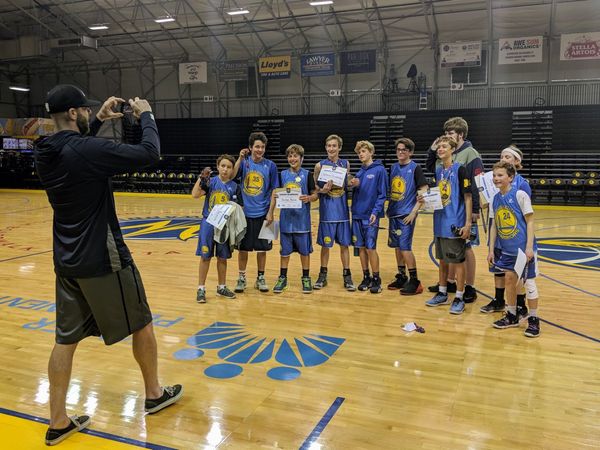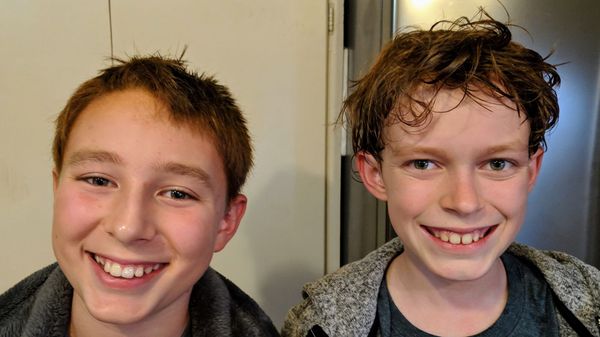Apple Keynote September 2017
Yesterday Apple announced a slew of new products in their keynote presentation at the Steve Jobs Theater. This is what stood out to me. The Apple TV 4K and iPhone X got my attention for their potential impact on the video on demand market that I work in.

Yesterday Apple announced a slew of new products in their keynote presentation at the Steve Jobs Theater. This is what stood out to me.
Apple announced:
- a new UHD & HDR capable Apple TV 4K,
- a new Series 3 Apple Watch with GPS, a cellular network connection and an altimeter,
- 3 new phones, the iPhone 8 and iPhone 8+ plus the next generation iPhone X.
The Apple TV 4K and iPhone X got my attention for their potential impact on the video on demand market that I work in.[1]
Apple TV 4K

The Apple TV 4K:
- plays H264 & HEVC(aka. H265), but not VP9 –the encoding used in the product I work on: Google Play Movies. This means that Google Play Movies customers can't AirPlay their titles to an Apple 4K TV in UHD or HDR. 😢
- supports two HDR technologies in HEVC encoded content: Dolby Vision & HDR10. Since HDR10 is royalty-free, more TVs support HDR10 than Dobly Vision. Netflix and Amazon video also support Dolby Vision and HDR10. Roku, Google Play Movies and Youtube on the other hand exclusively play HDR10. While Vudu only supports Dolby Vision. Dolby is clearly solidifying their position in the market. Make more content available in Dolby Vision and TVs are bound to follow. 🆗
- has a single output port – an HDMI 2.0a port. Gone are the optical audio output and USB input. 🆗
- plays both Digital Dolby (DD) and Digital Dolby + (DD+) audio. And with only HDMI output, there is no need to worry whether your connection can handle either. 👍
- included a surprise announcement that UHD/HDR content is included with HD purchases/rental. Genious! Loyal customers are automatically upgraded to the best experience. Customers who don't have a UHD/HD TV and/or Apple TV 4K yet are assured that their HD purchases hold value. On other platforms –Netflix, Amazon video & Google Play Movies for example, require one to purchase a higher priced UHD entitlement. On Google Play Movies one can't upgrade previously purchased HD entitlements to UHD/HDR entitlements. With this move, Apple avoids all these drawbacks.[2] Apple is looking at where the puck is moving to, not where it currently is. 👍
- (at the time of writing) does not play UHD/HDR content from Disney. If it did, it would pose the interesting problem of what to do with content purchased in iTunes and being played by another provider (e.g. Google Play Movies, Amazon video, etc.). Disney's Movies Anywhere allows customers to purchase Disney movies once and play at any of the participating providers. Should another provider also play UHD/HDR as Apple would? Or should it play HD quality as Apple doesn't have a separate UHD entitlement. Vice versa, which quality should Apply play for HD content purchased elsewhere? UHD/HDR as that is included in Apple's equivalent HD tier[3]? 🤔
iPhone X
The iPhone X has an amazing OLED display with Dolby Vision & HDR10 support for H265 streams. Its Super Retina HD display has a near 2K resolution of 2436x1125 pixels. This qualifies a UHD, as UHD is anything over 1920x1080, the resolution of 1080p, aka. full HD.
There are other UHD/HDR (Android) phones on the market, yet I expect that the iPhone X will increase the demand for UHD/HDR content. Future (high end) phones will also have high(er) resolutions with HDR support.
This will increase the pressure on other providers (such as my employer) to also offer UHD/HDR content on this class of mobile devices.
I work on UHD/HDR playback for Google Play Movies. ↩︎
Word is that Apple pays studios the HD and UHD price difference. Curious how that works in practice. Will Apple only pay the difference when the first UHD/HDR stream is played? Initially, many purchases/rentals will be played on devices that can't play UHD/HDR streams. ↩︎
Disney is actively seeking other studios to join the Movies Anywhere program. It would be a great benefit to customers to know that their purchases will outlast any single provider. ↩︎






